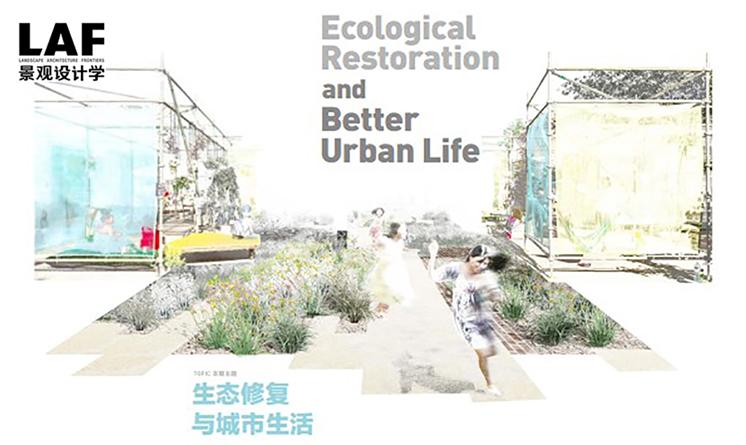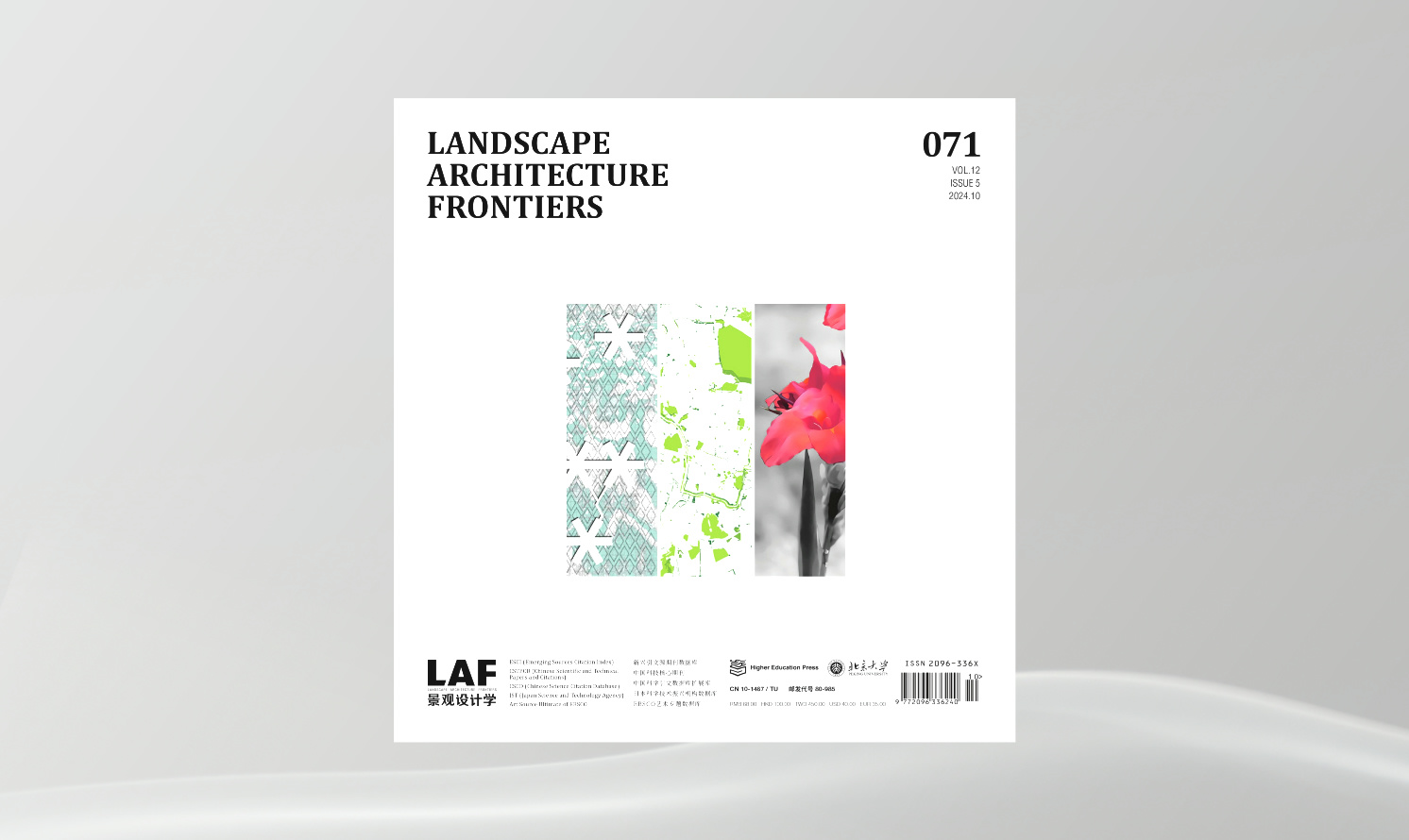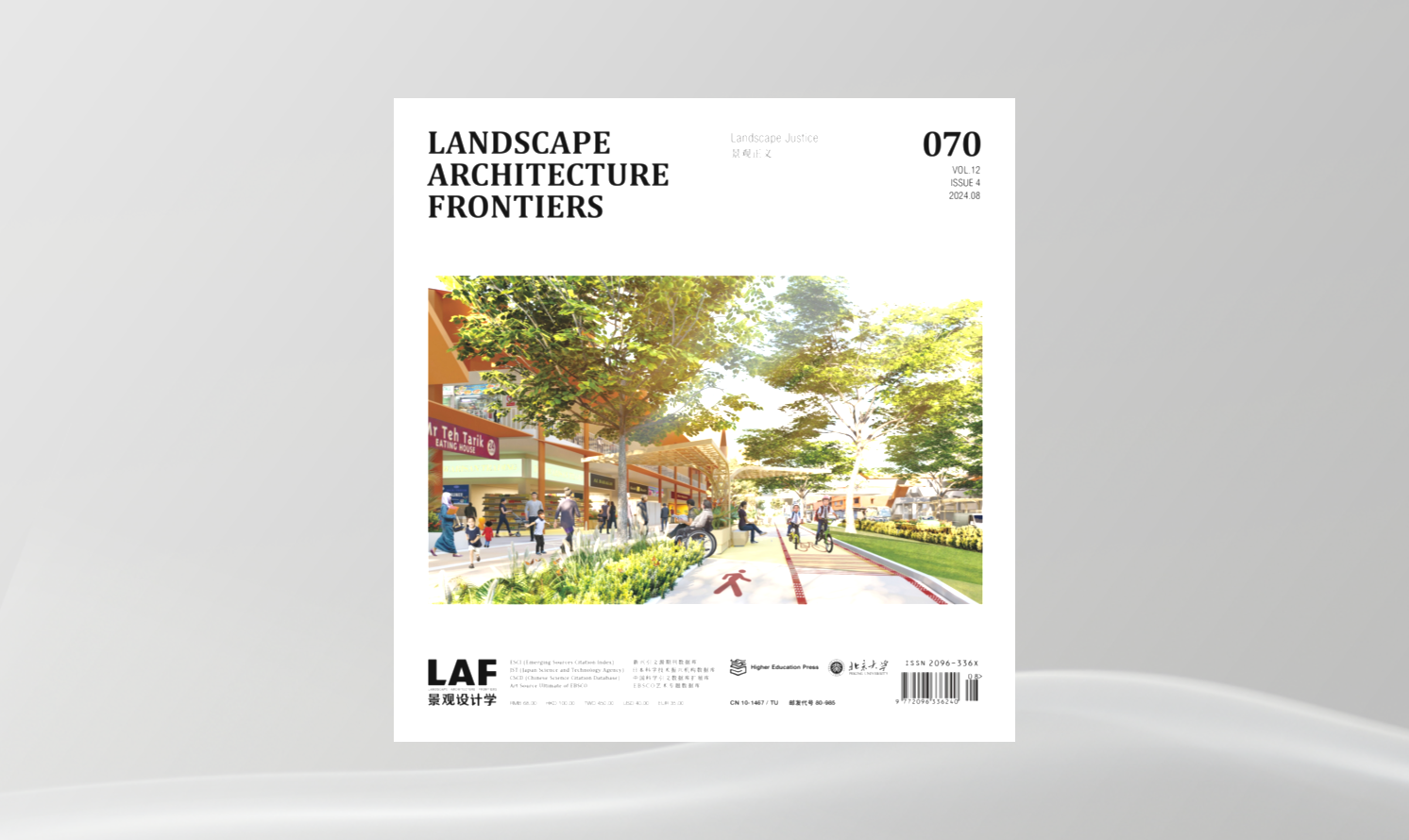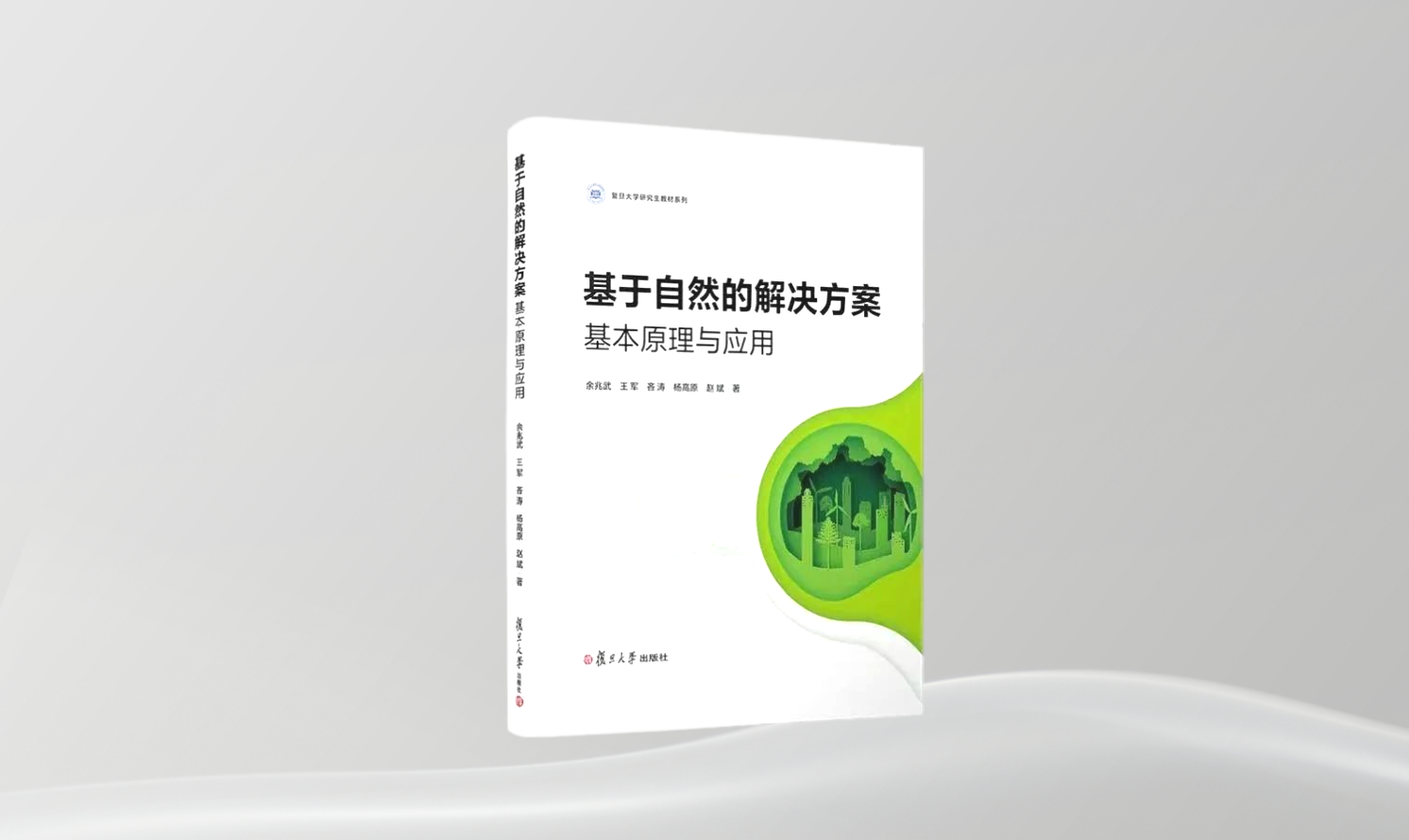日本街區(qū)保全型社區(qū)營造的發(fā)展與實(shí)踐
Development and Practices of Neighborhood Conservation-Based Community BUILDING in Japan
作者:周詳 Xiang ZHOU
摘要
社區(qū)營造強(qiáng)調(diào)從社會(huì)�����、政治和文化的角度理解街區(qū)的價(jià)值�����。街區(qū)保全型社區(qū)營造作為其中一種主要的營造方式,是日本歷史街區(qū)保護(hù)從靜態(tài)保存向動(dòng)態(tài)保全轉(zhuǎn)變過程中的創(chuàng)舉�。文章首先從日本歷史風(fēng)貌保護(hù)制度的流變?nèi)胧郑懻撊毡練v史環(huán)境的保護(hù)對(duì)象從單體到全域的演進(jìn)過程���,以及街區(qū)保全型社區(qū)營造產(chǎn)生的方式��。其次,文章以八女市福島地區(qū)為例研究公眾參與街區(qū)保全型社區(qū)營造的途徑����,旨在發(fā)掘街區(qū)保全視角下日本社區(qū)營造對(duì)中國當(dāng)代歷史街區(qū)保護(hù)和開發(fā)的啟示意義。最后���,文章認(rèn)為強(qiáng)調(diào)公眾參與和地方賦權(quán)�����,鼓勵(lì)和推動(dòng)民間團(tuán)體的介入是當(dāng)前語境下中國歷史街區(qū)實(shí)現(xiàn)物質(zhì)和文化的保護(hù)與再生的應(yīng)由之路���。
關(guān)鍵詞
歷史街區(qū);街區(qū)保全制度��;公眾參與��;街區(qū)保全型社區(qū)營造
Abstract
Community building aims to emphasize and celebrate social, political, and cultural value of neighborhoods. As a major way in the neighborhood conservation in Japan, neighborhood conservation-based community building was generated in the process of historic neighborhood protection developing from static preservation to dynamic conservation. Starting with a review on the history of the protection system of traditional quality in Japan, this paper puts its focus on the evolution of the protected targets — from only single objects to whole communities — and the approaches applied in the neighborhood conservation-based community building. Taking the empowerment and public engagement of neighborhood conservation in Fukushima, Yame as a case study, this paper studies and reveals the significance that provides reference to the development and protection of the historic neighborhoods in China. Finally, the paper argues that encouraging public engagement and motivation of civil organizations in the empowerment is crucial to the physical and cultural conservation and renewal of the historic neighborhood in the current social and political context of China.
Key words
Historic Neighborhood; Conservation System of Historic Neighborhood; Public Engagement; Neighborhood Conservation-Based Community Building
場(chǎng)地尺度綠色基礎(chǔ)設(shè)施的協(xié)同設(shè)計(jì)——以咸陽渭柳濕地公園生態(tài)修復(fù)設(shè)計(jì)為例
Collaborative Design of Site-Scale Green Infrastructure: A Case Study on the Ecological Restoration Design of Weiliu Wetland Park in Xianyang
作者:欒博,王鑫�,金越延,柴民偉���,胡春明 Bo LUAN, Xin WANG, Yueyan JIN, Minwei CHAI, Chunming HU
摘要
綠色基礎(chǔ)設(shè)施是一種具有多重目標(biāo)的綜合性實(shí)踐����。在中國���,由于缺少科學(xué)研究��、工程技術(shù)�、空間設(shè)計(jì)的多專業(yè)協(xié)同設(shè)計(jì)方法��,大量綠色基礎(chǔ)設(shè)施的場(chǎng)地實(shí)踐目標(biāo)單一�����,無法兼顧生態(tài)效益與人居環(huán)境品質(zhì)�,甚至造成生態(tài)損害。本文以陜西省咸陽市渭柳濕地公園項(xiàng)目的設(shè)計(jì)過程為例�,探索了以科學(xué)分析評(píng)價(jià)為依據(jù)、以專業(yè)工程技術(shù)為支持�����,通過空間設(shè)計(jì)進(jìn)行綜合統(tǒng)籌的協(xié)同設(shè)計(jì)方法,以實(shí)現(xiàn)場(chǎng)地尺度綠色基礎(chǔ)設(shè)施的綜合價(jià)值�。該方法對(duì)融合了科學(xué)性、技術(shù)性和藝術(shù)性的綠色基礎(chǔ)設(shè)施場(chǎng)地實(shí)踐具有借鑒價(jià)值�。
關(guān)鍵詞
綠色基礎(chǔ)設(shè)施;海綿城市����;生態(tài)修復(fù);廢水資源化��;協(xié)同設(shè)計(jì)���;渭河
Abstract
Green Infrastructure (GI) is to integrate with multiple objectives into a comprehensive consideration. In China, the lack of multi-disciplinary collaborative design method combining research, engineering technology, and spatial design as a whole limits the practice of GI, resulting in lots of single-function projects, unhelpful in the improvement of both urban resilience and the quality of city life. Taking the design process of Xianyang Weiliu Wetland Park as an example, this paper examines the collaborative design of multi-functional site-scale GI that is generated through a combination of scientific analysis and evaluation, engineering techniques, and landscape and spatial design, hoping to provide reference for the design and practice of GI-based ecological restoration and urban renewal in China.
Key words
Green Infrastructure; Sponge City; Ecological Restoration; Wastewater Reutilization; Collaborative Design; Weihe River
快速城鎮(zhèn)化背景下的城中村與老舊小區(qū)改造
Urban Renewal in Context of Rapid Urbanization
作者:余猛 Meng YU
摘要
在中國快速城鎮(zhèn)化的背景下,大多數(shù)城市呈現(xiàn)出品質(zhì)不高����、特色不明顯、生態(tài)環(huán)境有待改善��、公共服務(wù)水平有待提高等現(xiàn)狀����。但處在不同階段,具備不同發(fā)展條件和規(guī)模的城市所面臨的問題也有所差異。該訪談首先以存量空間的品質(zhì)提升為例����,從政府、規(guī)劃師組織引導(dǎo)及技術(shù)創(chuàng)新�����、模式創(chuàng)新等多個(gè)方向闡述了現(xiàn)狀進(jìn)展及解決方案�����。隨后針對(duì)新城和城市副中心的建立��,進(jìn)一步闡釋了城市發(fā)展的客觀規(guī)律��,并強(qiáng)調(diào)了將城市要素放在區(qū)域中統(tǒng)籌考慮的重要性��。在談及城市更新過程中的城中村拆-建及老舊小區(qū)改造時(shí)�,受訪者表示,雖然二者面臨的難點(diǎn)互有異同���,但對(duì)多元主體間共識(shí)的重視度均有所提升���。
關(guān)鍵詞
城市?���?�;城中村�;老舊小區(qū);公眾參與��;城市更新
Abstract
Currently, in China, rapid urbanization has caused many urban issues including lack of quality urban spaces and distinctive urban identity, declined ecological environment, and insufficient public services. Besides, these problems are increasingly complicated due to the different stages and conditions of urban development and different city scales. This interview starts with the topic of how to improve living quality of existing urban spaces, and Meng Yu, the interviewee, expounds the current situation, progress, and solutions regarding governmental guidance and urban planners’ intervention, and the innovations in technology and mechanism. Then Yu elucidates the evolutional laws of urban growth and the necessity of establishing new towns and sub-centers of metropolises, emphasizing the significance of integrating and coordinating different city functions at a regional scale as well. The interviewee also stresses that despite varying difficulties in both demolition of urban villages and renewal of old residential areas, the consensus among plural agents will play an increasingly weighted role in future China.
Key words
Urban Problems; Urban Village; Old Residential Area; Public Engagement; Urban Renewal
Mapping工作坊:重新解讀城市更新與日常生活的關(guān)系
Re-examining the Relationship between Urban Renewal and Everyday Life through Mapping Workshop
作者:何志森 Jason HO
摘要
受訪人何志森于2013年創(chuàng)辦了Mapping工作坊����,以“跟蹤、觀察��、發(fā)現(xiàn)—思維導(dǎo)圖訓(xùn)練—構(gòu)圖思考—策展”的獨(dú)特議程�,為解讀城市和空間提供了另外一種可能�。在此次訪談中,何志森分享了該工作坊產(chǎn)生的契機(jī)與意圖�,并結(jié)合自身實(shí)踐經(jīng)驗(yàn),解讀了“城市針灸”的含義���?���;陂L期以來對(duì)于消極空間的關(guān)注,其認(rèn)為在很多看似無序的混亂背后都存在隱藏的秩序��,正是這種秩序維持著整個(gè)城市的活力和安全�����。而談及社區(qū)營造�����,其提出�����,如何在不同的利益組織之間實(shí)現(xiàn)平衡���,將成為設(shè)計(jì)師在國內(nèi)未來的社區(qū)營造中面臨的最大難點(diǎn)���。
關(guān)鍵詞
Mapping工作坊;城市更新�����;城市針灸����;社區(qū)營造�����;建筑教育
Abstract
Jason Ho, the interviewee, founded Mapping Workshop in 2013, offering an alternative option for interpreting city and urban space with a unique agenda of “observation — mind mapping — representation — curation.” In this interview, he shares the intention to launch Mapping Workshop and interprets “urban acupuncture” based on his practice. Having been long focusing on studying negative urban spaces, Ho indicates that the hidden order behind the chaos in a city generates vigor and maintains the city safe. The interview also covers the topic of community empowerment, in terms of which Ho believes that how to negotiate and coordinate with different stakeholders will be the biggest and most difficult issue to urban designers in future community empowerment in China.
Key words
Mapping Workshop; Urban Renewal; Urban Acupuncture; Community Empowerment; Architecture Education
全球氣候變化背景下的棕地修復(fù)
Brownfield Remediation under Global Climate Change
作者:尼爾?科克伍德 Niall KIRKWOOD
摘要
本次采訪聚焦于全球氣候變化背景下的后工業(yè)區(qū)改造與棕地修復(fù)����,以及技術(shù)在景觀設(shè)計(jì)教學(xué)與實(shí)踐中的應(yīng)用����。盡管氣候變化帶來的影響多屬負(fù)面,但尼爾?科克伍德教授認(rèn)為應(yīng)當(dāng)從長遠(yuǎn)角度辯證地看待這一問題�����。隨著科學(xué)技術(shù)的迅速發(fā)展�,新時(shí)期的棕地修復(fù)項(xiàng)目應(yīng)運(yùn)用更多的將傳統(tǒng)技術(shù)和新技術(shù)相結(jié)合的策略,同時(shí)鼓勵(lì)更加廣泛的社區(qū)參與���。此外,基于技術(shù)在景觀中應(yīng)用的教學(xué)����,科克伍德教授介紹了5種不同類型課程的教學(xué)方法的差異�����?�?瓶宋榈陆淌谝嘀赋?��,絕對(duì)的原創(chuàng)設(shè)計(jì)并不存在,唯有不斷擴(kuò)充知識(shí)儲(chǔ)備�、積極參與項(xiàng)目實(shí)踐,景觀設(shè)計(jì)師才能夠在項(xiàng)目設(shè)計(jì)和落地過程中更加得心應(yīng)手���。
關(guān)鍵詞
后工業(yè)區(qū)改造�����;棕地修復(fù)�����;氣候變化��;技術(shù)��;社區(qū)參與�;原創(chuàng)性
Abstract
This interview focuses mainly on the post-industrial regeneration and brownfield remediation with the influence of global climate change and the application of technology in landscape architecture teaching and practices. Although climate change is largely regarded to be negative, Professor Niall Kirkwood suggested that we should consider its impacts dialectically in much longer time frame. With the development of science and technology, brownfield remediation in the new era should utilize new technologies with old ones and encourage extensive community participation. With regard to the teaching of technology applied in landscapes, Professor Kirkwood also introduced the differences of five types of courses. In addition, he stated that in landscape architecture design, nothing could be absolutely original. Only with a wide range of experiences and engagement in different types of projects, could landscape architects be confident in their design conception and its evolution as a material reality.
Key words
Post-Industrial Regeneration; Brownfield Remediation; Climate Change; Technology; Community Participation; Originality
創(chuàng)建生態(tài)的城市棲息地——芝加哥北島公園
Creating an Ecological Urban Habitat at Northerly Island in Chicago
作者:Studio Gang設(shè)計(jì)事務(wù)所 Studio Gang
摘要
作為一項(xiàng)綜合框架計(jì)劃的組成部分之一,北島公園項(xiàng)目將芝加哥湖畔的一處面積為37hm2的人造半島改造為一個(gè)生機(jī)勃勃的生態(tài)公園���。項(xiàng)目設(shè)計(jì)充分體現(xiàn)了場(chǎng)地的人工性特質(zhì)��,通過地形改造和景觀設(shè)計(jì)����,吸引野生動(dòng)物來此棲息一以隨著時(shí)間的推移����,在更寬廣的范圍內(nèi)創(chuàng)造出一個(gè)擁有豐富生物多樣性的生態(tài)系統(tǒng)。這里有著各種各樣的棲息地和特色建筑�,為人們提供了多種在城市中親近自然的途徑。
關(guān)鍵詞
生物多樣性�;公共公園;生態(tài)系統(tǒng)�;城市野生動(dòng)物
Abstract
Developed as part of a comprehensive framework plan, the Northerly Island project transforms a man-made peninsula on Chicago’s lakefront into a 91-acre public park that functions as a living ecosystem. The design embraces the site’s artificiality, constructing a topography and landscape that encourages wildlife to occupy it — over time, creating an amplified, bio-diverse ecosystem whose various habitats and architectural features offer people multiple ways to engage nature in the city.
Key words
Biodiversity; Public Park; Ecosystem; Urban Wildlife
運(yùn)行的生產(chǎn)性景觀:常德市城頭山大遺址公園生態(tài)修復(fù)與景觀設(shè)計(jì)
Productive Landscape in Operation: Ecological Restoration and Landscape Design of Chengtoushan National Archaeological Site Park in Changde
作者:耿苒,邵飛�����,張亞奇 Ran GENG, Fei SHAO, Yaqi ZHANG
摘要
該項(xiàng)目旨在探索如何在失去了原有田塊及陂塘系統(tǒng)肌理的情況下挖掘遺址的場(chǎng)所精神�����,尋找農(nóng)業(yè)景觀與旅游地的契合點(diǎn)���,發(fā)現(xiàn)促進(jìn)生態(tài)系統(tǒng)良性循環(huán)的設(shè)計(jì)要素和方法�����,以及重塑人與土地間可持續(xù)的發(fā)展關(guān)系�����。通過對(duì)遺址外圍景觀進(jìn)行最小程度的干預(yù)�����、修復(fù)護(hù)城河水岸及在場(chǎng)地南側(cè)區(qū)域設(shè)計(jì)戶外稻田博物館���,改造后的城頭山遺址公園探索出了一條遺址公園景觀保護(hù)與改造的創(chuàng)新之路。
關(guān)鍵詞
遺址公園�����;場(chǎng)所精神�;生產(chǎn)性景觀;稻田博物館;生態(tài)修復(fù)
Abstract
This project focused on how to celebrate the spirit of the heritage site on a damaged base where the original texture of rice fields and pond systems were replaced with hardscapes; how to integrate the agricultural landscape with tourism; how to explore landscape elements and design methods that improve the local ecosystem; and, how to reestablish a sustainable and healthy relationship between human and land. Through the minimum intervention on the surroundings of the core heritage area, the restoration of the moat waterfront, and the creation of the outdoor rice field museum in the south, the transformation of Chengtoushan National Archaeological Site Park explores an innovative way for landscape protection and design of heritage parks.
Key words
Heritage Park; Spirit of Place; Productive Landscape; Rice Field Museum; Ecological Restoration
澳大利亞阿德萊德市鮑頓主公園
Bowden Main Park in Adelaide, Australia
作者:澳派景觀設(shè)計(jì)工作室 ASPECT Studiosl
摘要
新建的鮑頓主公園坐落于南澳大利亞州鮑頓改造區(qū)中心����,是當(dāng)?shù)刈畲蟮墓部臻g。它的建成大大推動(dòng)了鮑頓地區(qū)在阿德萊德中央商務(wù)區(qū)邊緣地帶創(chuàng)造一個(gè)多樣化�����、有活力的新型社區(qū)這一愿景的實(shí)現(xiàn)����。鮑頓公園為占地15hm2的城市填充式開發(fā)中心營造了一片綠洲,這里將成為阿德萊德中心商務(wù)區(qū)外圍人口最稠密的城市區(qū)域����,預(yù)計(jì)將為學(xué)生、年輕家庭����、首套房業(yè)主和退休人員等人群提供居住場(chǎng)所。鮑頓公園的案例展現(xiàn)了一個(gè)思慮周全的設(shè)計(jì)如何建立人與人之間關(guān)系的紐帶��,增強(qiáng)城市的社交和娛樂功能��,以及如何在不斷發(fā)展的社區(qū)中為當(dāng)?shù)鼐用裉峁┻m宜的場(chǎng)所���。
關(guān)鍵詞
可持續(xù)設(shè)計(jì)���;公共空間��;城市填充式改造;社區(qū)參與
Abstract
Bowden’s new main park is the central and single largest public space located within the Bowden redevelopment in South Australia. It makes a significant step in realizing the vision for Bowden of creating a diverse and exciting new community on the edge of Adelaide’s CBD. Bowden Main Park provides a green oasis in the heart of a 15-hectare urban infill development that will become Adelaide’s most densely populated urban district outside the CBD, and an area projected to house a wide ranging demographic from students to young families, first home owners and retirees. Bowden Main Park is an example of how thoughtful and considered design can connect people, enhance the social and recreational fabric of the city and provide an authentic destination within the new and still establishing community.
Key words
Sustainable Design; Public Space; Urban Infill Transformation; Community Engagement
都市走廊的可持續(xù)都市主義:德克薩斯州休斯頓10號(hào)園區(qū)實(shí)證型城市設(shè)計(jì)
Sustainable Urbanism for a Metropolitan Corridor: An Evidence-based Urban Design for Park 10 in Houston, Texas
作者:金埈鉉�,蓋倫?紐曼,封赫婧��,杰雷米?梅里爾����,樸鐘薰,卞佳荷 Jun-Hyun KIM, Galen NEWMAN, Hejing FENG, Jeremy MERRILL, Jonghoon PARK, Jiahe BIAN
摘要
該項(xiàng)目旨在為美國德克薩斯州休斯頓市的一處商業(yè)區(qū)制定一項(xiàng)綜合性總體規(guī)劃�,該規(guī)劃以可持續(xù)都市主義為設(shè)計(jì)原則。其主要設(shè)計(jì)目標(biāo)是建立一個(gè)宜居且可持續(xù)的城市商業(yè)中心��,以促進(jìn)當(dāng)?shù)亟?jīng)濟(jì)增長���;同時(shí)推廣一項(xiàng)街景設(shè)計(jì)指南�����,以提升該地塊對(duì)行人和騎行者的友好度�����。
關(guān)鍵詞
可持續(xù)都市主義��;街景設(shè)計(jì)���;低影響開發(fā)����;步行和騎行友好型開發(fā)��;能源走廊區(qū)
Abstract
This project is to develop a comprehensive master plan incorporating key principles of sustainable urbanism for a business district in Houston, Texas, USA. The main design objectives are to create a livable and sustainable urban business center, to promote economic growth and to implement a streetscape design guideline to promote walkability and bikeability.
Key words
Sustainable Urbanism; Streetscape Design; Low Impact Development; Walkable and Bikeable Development; Energy Corridor District
波蘭波茲南市馬耳他藝術(shù)節(jié)臨時(shí)公共空間
Temporary Public Space for Malta Festival Poznań in Poland
作者:Starzak Strebicki設(shè)計(jì)事務(wù)所 Atelier Starzak Strebicki
摘要
該項(xiàng)目旨在柔化自由廣場(chǎng)巨大的體量感�,營造宜人尺度的廣場(chǎng)空間。自由廣場(chǎng)主要由混凝土鋪裝而成���,缺少綠化����,在嚴(yán)寒酷暑之際����,很少會(huì)有人在此駐足。而馬耳他藝術(shù)節(jié)則倡導(dǎo)恢復(fù)傳統(tǒng)的街頭戲劇��,自由廣場(chǎng)正是借助這一契機(jī)成為了備受歡迎的公共空間。廣場(chǎng)占地面積超過4 000m2��,通過將其劃分成較小的分區(qū)��,并在各個(gè)分區(qū)中設(shè)計(jì)多姿多彩的活動(dòng)�����,廣場(chǎng)空間變得更加友好且適宜各年齡層的人群使用����。圓形或長方形的桌椅��、防水軟墊等不同類型的城市小品����,界定出了特定的功能區(qū)域,包括兒童區(qū)����、臨時(shí)咖啡廳和餐廳、音樂和戲劇舞臺(tái)�,以及工作坊。由此���,自由廣場(chǎng)成為了激發(fā)社區(qū)活力的城市空間的設(shè)計(jì)典范�。
關(guān)鍵詞
臨時(shí)公共空間;城市生活���;城市更新���;社區(qū)活力
Abstract
The aim of the project was to change the monumental scale of Liberty Square into human scale. During summer and winter, Liberty Square remains unused, where the concrete surface as well as the lack of greenery curbs the spontaneous actions of city dwellers. In the frame of Generator Malta, an initiative undertaking the tradition of street theater, the square is changed into a lively public realm. Dividing this large area (more than 4,000 m2) into smaller zones and designing places for particular activities helped to establish accessible friendly space for everyone. Different types of urban furniture, including round or rectangular tables and benches, and soft waterproof pillows, help define specific zones for children, temporary café and restaurant, music and theater stage, and workshop space. In effect, the Liberty Square becomes a prototype of an urban interior of community activation.
Key words
Temporary Public Space; City Life; Urban Renewal; Community Activation
彈性搭建——首爾解放村商業(yè)街區(qū)微更新設(shè)計(jì)
Flexible Construction: Micro-renewal Design in the Haebangchon Neighborhood of Seoul
作者:呂小輝,徐夕然�����,張旸��,賈靜 Xiaohui LV, Xiran XU, Yang ZHANG, Jing JIA
摘要
項(xiàng)目針對(duì)韓國首爾市解放村商業(yè)街區(qū)中人車混行�、市集混亂、活動(dòng)空間類型單一�����、設(shè)施匱乏等問題�����,提出了“彈性搭建”微更新設(shè)計(jì)方案��,即通過一種自下而上的、低成本且高效的模塊化設(shè)計(jì)方式���,對(duì)街區(qū)進(jìn)行有機(jī)更新��,既可有效緩解各種矛盾�,又可保留街區(qū)原有的活力����。“彈性搭建”項(xiàng)目嘗試探索一種更具彈性和可持續(xù)性的空間干預(yù)模式����,以期為城市傳統(tǒng)街區(qū)的更新提供一種新思路�����。
關(guān)鍵詞
傳統(tǒng)街區(qū)����;微更新;彈性搭建�;模塊化設(shè)計(jì)
Abstract
To address the problems of lacking traffic planning, informal street vending, and deficient public space and amenities in the Haebangchon neighborhood of Seoul, South Korea, this project proposes a micro-renewal plan of “flexible construction” to transform the neighborhood in a bottom-up way. This cost-efficient approach of modular design will alleviate these conditions and improve neighborhood vitality. The project aims to develop a more resilient and sustainable spatial design for urban renewal.
Key words
Traditional Neighborhood; Micro-Renewal; Flexible Construction; Modular Design
禁足之境:演進(jìn)的自然遺產(chǎn)與衰敗的災(zāi)難遺跡
Forbidden Ground: Evolutionary Natural Legacy and Decaying Disaster Heritage
作者:陳煦斌 Xubin CHEN
摘要
當(dāng)代紀(jì)念性構(gòu)筑物側(cè)重于突出建筑形態(tài)和象征意義,而忽略了它們所處的場(chǎng)地和環(huán)境�����。本研究認(rèn)為景觀過程和人類活動(dòng)的交織能夠提供一種更具批判性的紀(jì)念方式。這些過程涵蓋土地��、水體����、植物和其他景觀元素,以及人類對(duì)某一事件的認(rèn)知與記憶�。景觀不是一個(gè)靜止的場(chǎng)景,而是會(huì)通過物質(zhì)轉(zhuǎn)移隨時(shí)間和空間更迭而持續(xù)進(jìn)化�����。因此�,針對(duì)某一事件的紀(jì)念性景觀經(jīng)歷了從古典美學(xué)到相對(duì)美學(xué),再到系統(tǒng)美學(xué)的持續(xù)發(fā)展過程�����,并最終揭示了蘊(yùn)藏其中的經(jīng)濟(jì)���、社會(huì)政治和生態(tài)價(jià)值�。通過就不同的時(shí)間尺度、復(fù)雜的物質(zhì)屬性和未來的不確定性提出一系列設(shè)計(jì)策略和方法�,該項(xiàng)目試圖模擬和呈現(xiàn)那些有潛力改變場(chǎng)地的環(huán)境生態(tài)和社會(huì)政治生態(tài)的自然模式。項(xiàng)目以世界歷史上規(guī)模最大的技術(shù)性災(zāi)難之一——發(fā)生于1986年的切爾諾貝利核事故為對(duì)象�,提出自2016年起50年的規(guī)劃預(yù)景。以事故場(chǎng)地為出發(fā)點(diǎn)��,該項(xiàng)目旨在紀(jì)念這一嚴(yán)重事件并對(duì)各類政治假設(shè)和復(fù)雜現(xiàn)實(shí)作出有效回應(yīng)���。
關(guān)鍵詞
切爾諾貝利��;核輻射���;政局變幻;物質(zhì)轉(zhuǎn)移����;植物修復(fù);時(shí)間演變
Abstract
Contemporary monuments tend to foreground architectural form and symbolic significance, rather than the land and the ground on which they rest. This thesis argues that the combination of landscape processes and human operations offers a more critical way to construct a monument to an event. These processes involve earth, water, plants, and other landscape elements, as well as the senses and memories of humans in relation to an event. Landscape is not a static, idyllic scene, but is constantly evolving over time and space through material migrations. Therefore, an event’s monumental landscape continually evolves from a classical to a relative to a systematic aesthetic, which ultimately unveils its economic, sociopolitical and ecological values. Proceeding from a set of design strategies and interventions that deal with integrated timescales, complex materials, and uncertain futures, this project seeks to simulate and manifest natural patterns that have the potential to change the environmental and sociopolitical ecology of a place. It proposes a series of 50-year landscape scenarios since 2016 for the development of the Chernobyl accident of 1986 site, which was confronted with one of the largest-scale technogenic disasters in the world history. With this site as a point of departure, the project serves to memorialize the event and respond productively to various political hypotheses and complex realities.
Key words
Chernobyl; Nuclear Radiation; Political Ambiguity; Material Migration; Phytoremediation; Time Process
喬木之外
More than Trees
作者:瑪麗安娜?西凱拉���,伊莎貝爾?施密特,亞歷山大?桑派奧����,阿瑪利亞?羅布雷多 Mariana SIQUEIRA, Isabel SCHMIDT, Alexandre SAMPAIO, Amalia ROBREDO
摘要
位于巴西中部的塞拉多草原占據(jù)了近1/4的國土,是世界上生物多樣性最豐富的熱帶稀樹草原。盡管擁有豐富而美麗的植物資源����,塞拉多景觀的聞名程度卻遠(yuǎn)不及同樣位于巴西的熱帶雨林,在巴西的本土文化中也鮮被提及��。
長期以來����,巴西本土的生態(tài)修復(fù)和景觀設(shè)計(jì)項(xiàng)目往往都只考慮喬木,而忽略草本及灌木����。而塞拉多草原恰好以草本及灌木見長,其種類多達(dá)7 000余種�,占據(jù)了60%以上的生物多樣性,并擁有多種基本生態(tài)功能����。
當(dāng)前,這一情況正在發(fā)生轉(zhuǎn)變�。在本文所呈現(xiàn)的“恢復(fù)塞拉多”和“塞拉多公園”這兩個(gè)相互關(guān)聯(lián)的實(shí)踐中,都展開了對(duì)不同的植物組織形式(草本����、木本和藤本)在生態(tài)修復(fù)及景觀設(shè)計(jì)項(xiàng)目中進(jìn)行應(yīng)用的探索。此外,本文還呈現(xiàn)了兩個(gè)項(xiàng)目團(tuán)隊(duì)嘗試進(jìn)行的兩組試驗(yàn)�,以展示理解巴西熱帶稀樹草原并同其一同發(fā)揮效益的可能性。
關(guān)鍵詞
生態(tài)修復(fù)����;景觀設(shè)計(jì);自然風(fēng)格種植��;本土植物���;熱帶稀樹草原����;塞拉多
Abstract
Right at the center of Brazil, covering almost 22% of its area, lies the world’s most biodiverse savanna, the Cerrado. Despite of the richness and beauty of its flora, Cerrado’s landscapes are not as celebrated as the country’s rainforests, and tend to be neglected in cultural expressions.
Historically, ecological restoration and landscape design projects have considered only the trees of the biome, leaving behind grasses, forbs and shrubs that not only characterize the savanna, but also represent more than 60% of the diversity (close to 7,000 species) of the Cerrado, which hold many fundamental ecological functions.
This situation is now beginning to change. This article presents two interrelated projects, Restaura Cerrado and Jardins de Cerrado, which focus on different plant forms (herbaceous, woody and liana species) in restoration and gardening initiatives. Two experiments are conducted with efforts to explore new possibilities of understanding the Brazilian savanna and of working with it.
Key words
Ecological Restoration; Landscape Design; Naturalistic Planting; Native Plants; Savanna; Cerrado
 京公海網(wǎng)安備 110108000058號(hào)
京公海網(wǎng)安備 110108000058號(hào)











